During my mad rush for a compact rangefinder, I went on a hunt for an Agfa Optima Sensor 1535, one of the more unique- and interesting-looking, and one of the last, compact rangefinders out there. They’re fairly rare, and usually in the $100+ range, so when I spotted one on Etsy for $50, I jumped on it. When I opened the box and found a 535, I was first annoyed, then angered, and later realized it was probably my own mad rush, and not anything nefarious from the seller.
It’s not at all what I wanted—a compact rangefinder—or expected, but I gave it a try anyway, and I’m pleasantly surprised…
The Agfa Optima Sensor electronic 535 is one in a long line of programmed autoexposure cameras from Agfa. Starting in 1959, the Optima line were all p-mode cameras with lenses in the 38mm-45mm range, with maximum apertures around f/2.8-f/4 range, and shutter speeds from 1/15-1/200th (in the early years) to 15-1/1000th (in later and more upscale models).
In 1969, German firm Schlagheck & Schultes redesigned the Sensor line, adding the distinctive red shutter button and some other new features, and in 1976, the completely redesigned Optima Sensor 535 appeared.
The specs are fairly simple:
- Lens: 40mm Agfa Solitar, 4 elements
- 49mm filter rings
- Aperture: f/2.8-22 (adjustable, with a flash)
- Shutter Speeds: 15-1/500th (according to the manual, but I counted off 32 seconds on one of my streaking taillight, out-the-window shots)
- ISO: 25-500
- Focus: Zone, with symbols for torso and head, two people and mountain on the top, and feet/meter markings on the bottom*
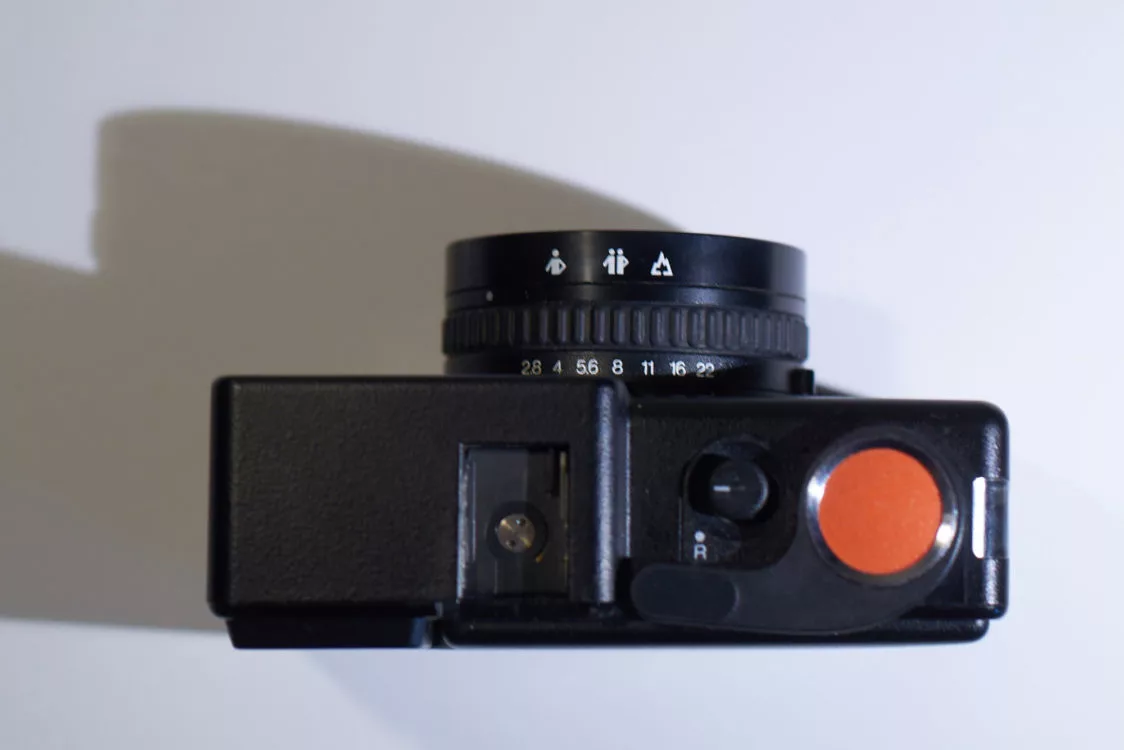
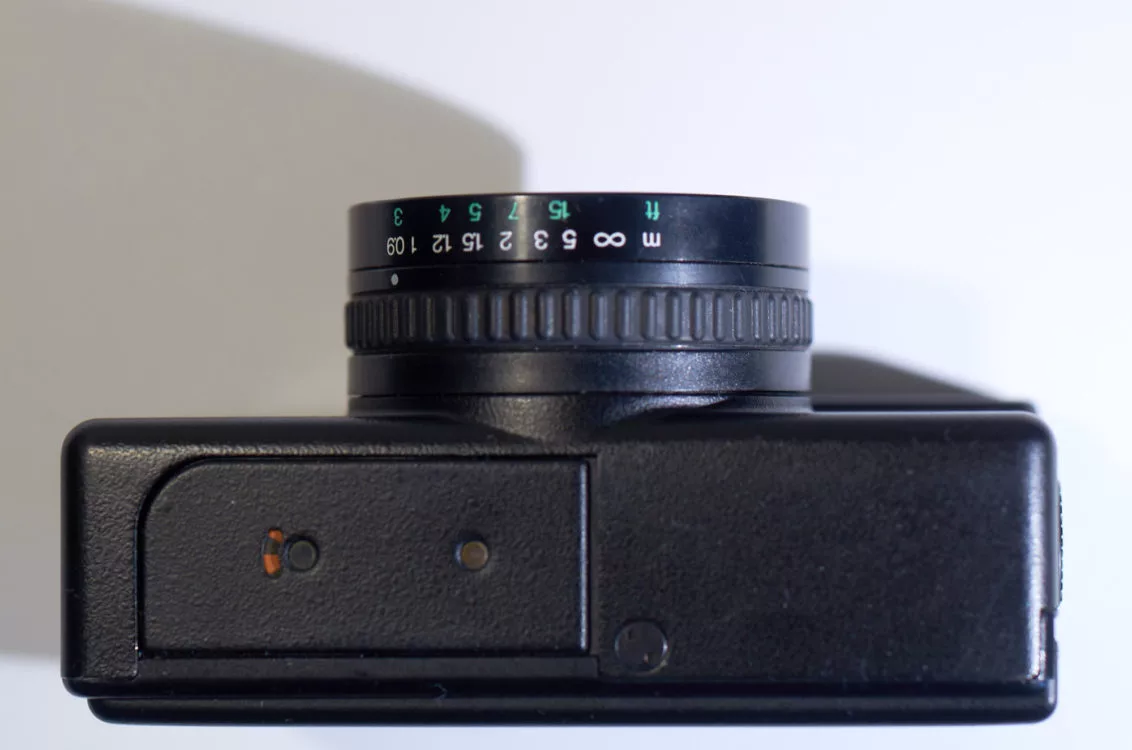
The camera is small, but has a nice heft to it owing to the mostly metal construction, and viewfinder is HUGE and bright, easily double or triple the size of a viewfinder on similar cameras, with incredibly bright frame lines. The shutter button is easy to find, with a clear pressure point in the center, and the focus ring is nicely dampened, with clear, thunking stops at torso, two people, and mountain. The only weird thing is the location of the tripod socket, on the left side rather than the bottom, and I have no idea why they thought this was a problem in need of a solution.
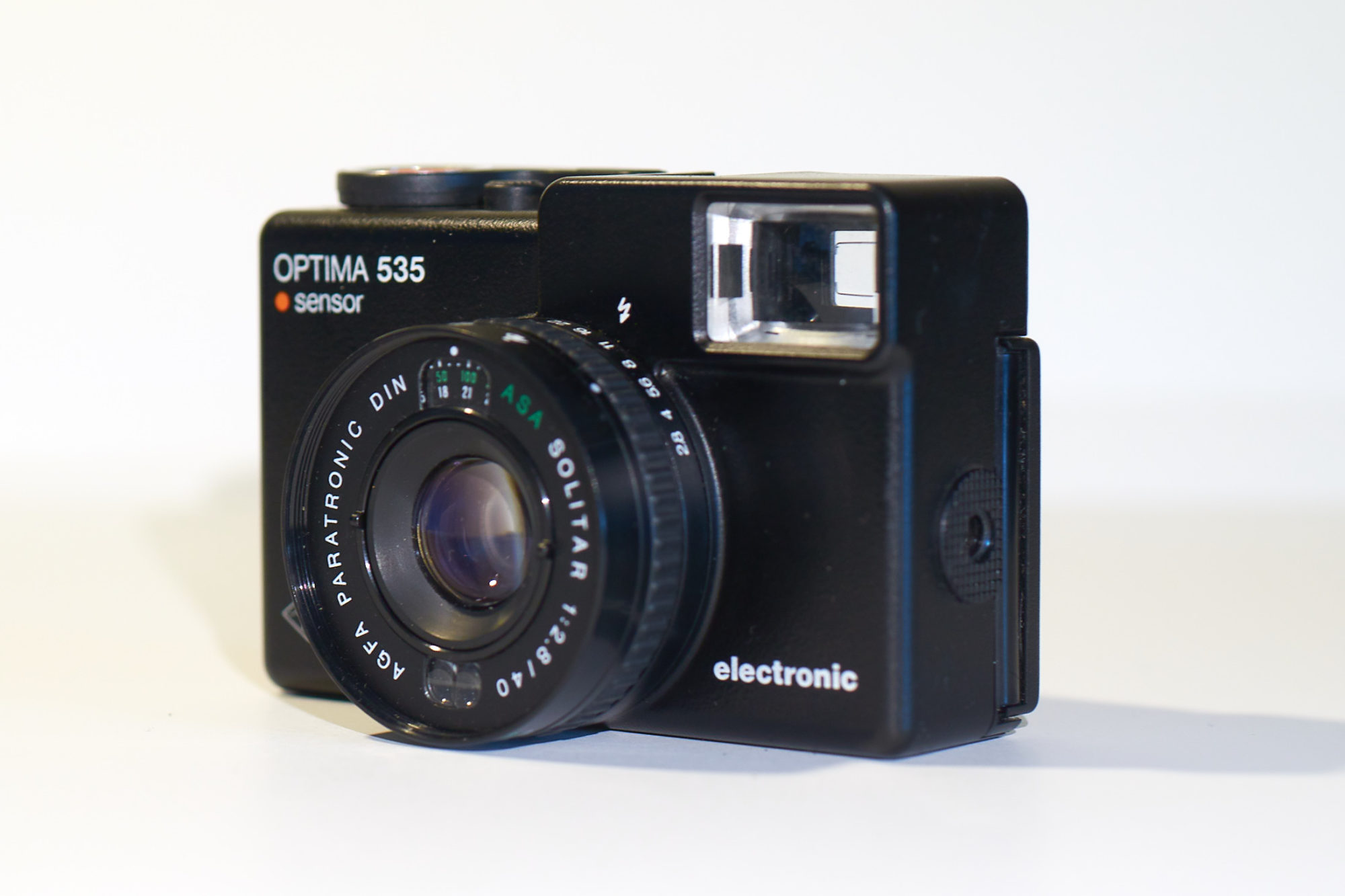
There are no strap lugs to be found anywhere, but the 535 came with a great shoulder strap that screws into the tripod socket, so the side-mounting make sorta sense, except that it gets in the way of your nose when you’re framing up, and it’s just on the wrong side for how I tend to carry a camera.
Loading the camera is a breeze: you just tuck a 1/8″ of the leader into the little slot with the arrows on it, close the back, and give the advance lever a single wind, and it’s ready to go.
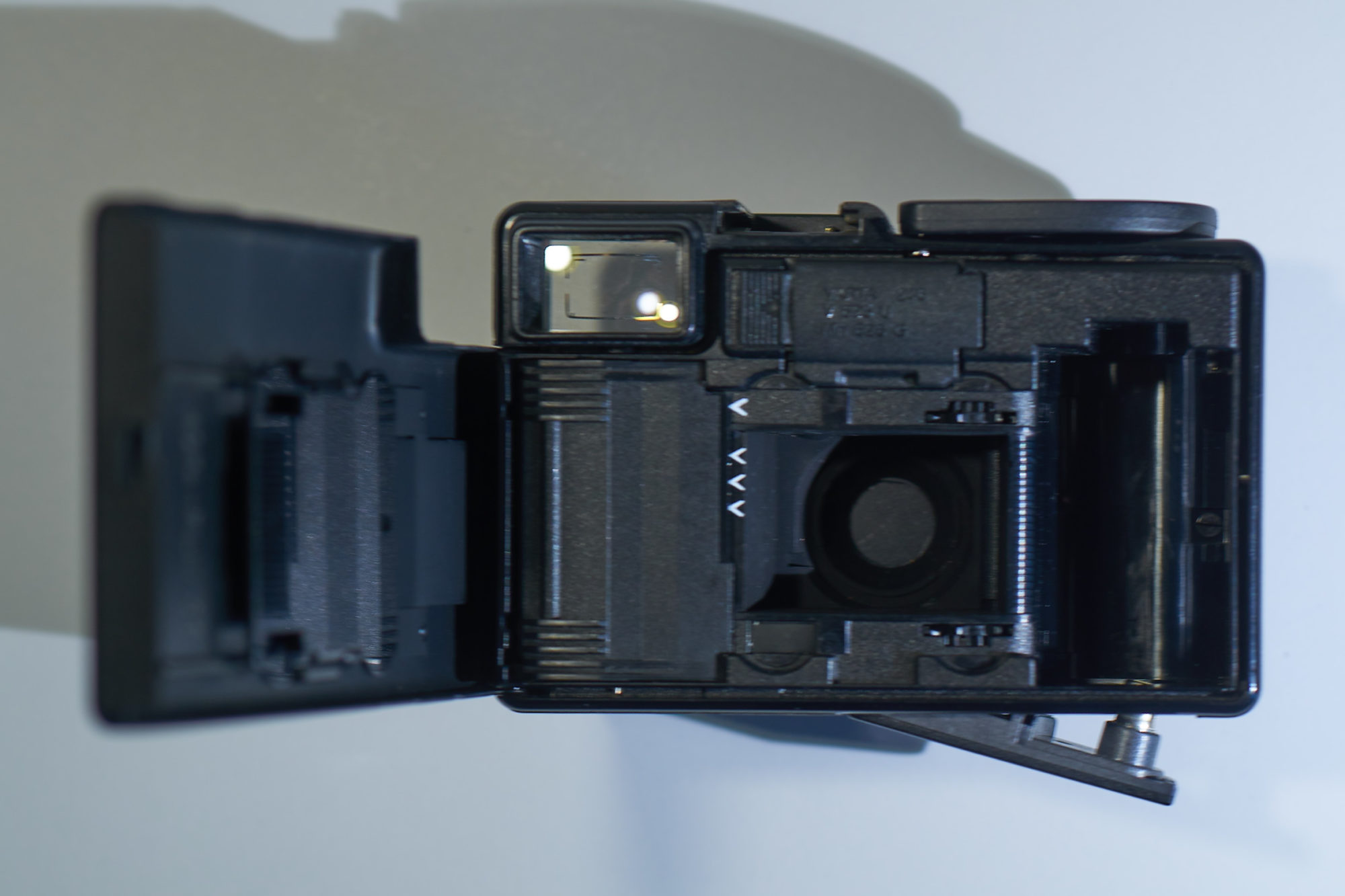
I got 40 or 41 frames out of a 36 exposure roll, and the little door over the take-up spool saved a bunch of frames on my first roll. This takes some explaining…
To rewind the film, you push a button on the top panel down and rotate it slightly to engage a clutch that transforms the advance lever into a rewind lever. During the WorldWide Photo Walk, I finished a roll of Kodak Plus-X engaged the rewind clutch, started rewinding, and after 4 or 5 winds, I felt the tension release and assumed it was done. I opened the back and AGH! there was still film there. I quickly closed the back, and tried again. Again, the tension released, I opened the back and found film still there. After two failed attempts, I just kept rewinding and rewinding and waited until I got home to put it in the dark bag before opening the back again.
Anyway, with all that, I only lost 2.5 or 3 frames: that little door thing really works! Great design.
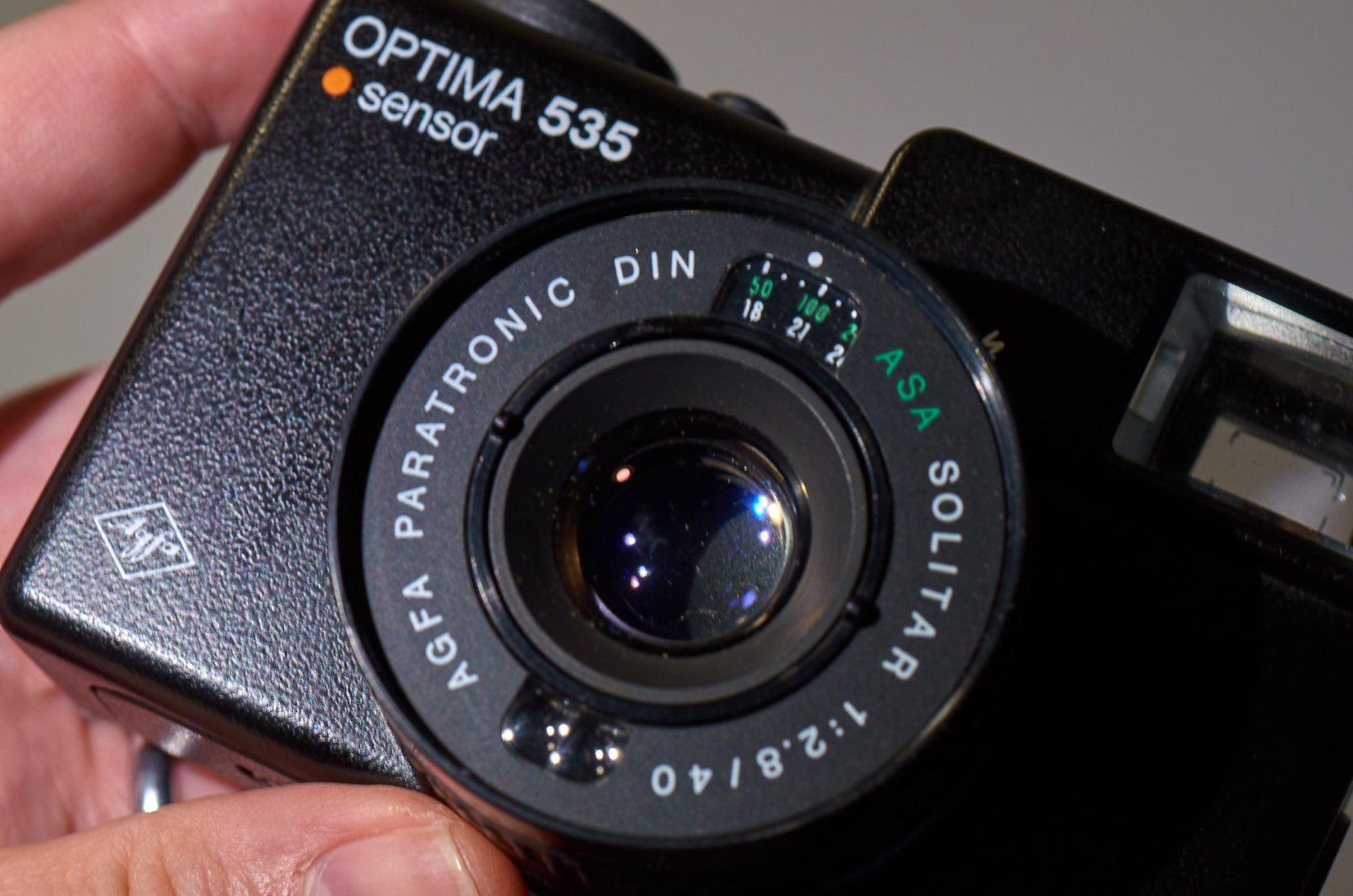
So the Agfa 535 wasn’t the camera I expected, or wanted, and I still hate me some Zone Focus cameras, but I only forgot to focus on maybe one frame out of two rolls so far. Other ZF cameras in my collection have ft/m markings and/or pictograms, but they’re usually shown on the same side of the dial. For some reason, having to turn the camera over to see the numerical markings helped me to judge distance better, I think, so once again, great design!
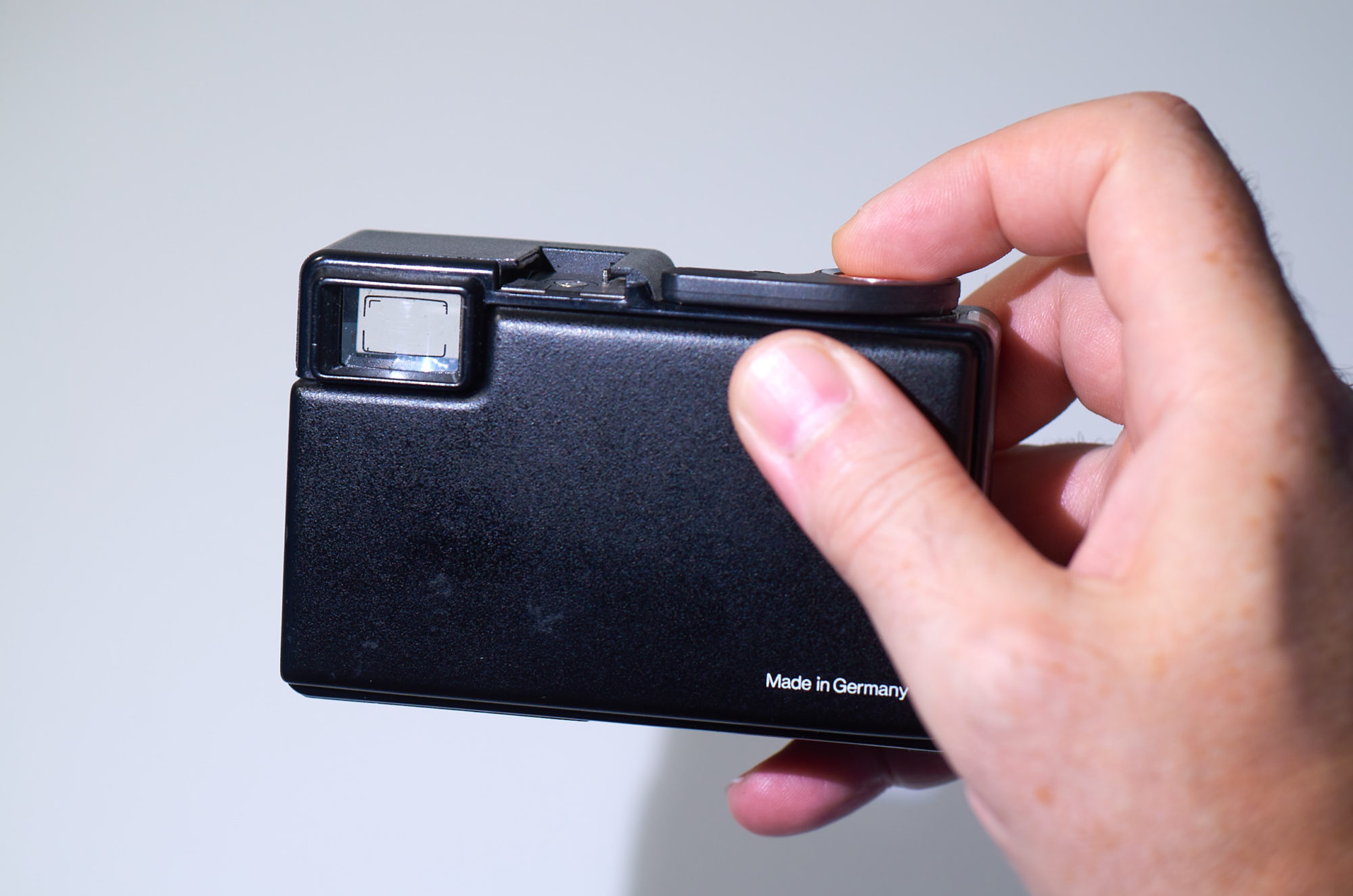
I like this little camera. It’s very well built, fits great in the hand, is easy to use, and gives excellent results. What’s not to like?
| Purpose | |
| Price | |
| Craftsmanship | |
| Ease of Use |
Overall, I’d give it a solid 4.5 stars.
And apologies for the lack of pictures from the Agfa Optima Sensor 535, but I shared several some weeks ago, as part of the WorldWide Photo Walk and my review of Kodak Plus-X, and if you stay tuned here, in about 15 minutes, I’ll share some more… this post has just gotten a bit overlong.
If you have one of the Optima Sensor cameras, let me know what you think, and if you have a 1535 and want to get rid of it, I’m still interested in getting one, maybe even more so after the results I got out of the 535, so reach out!
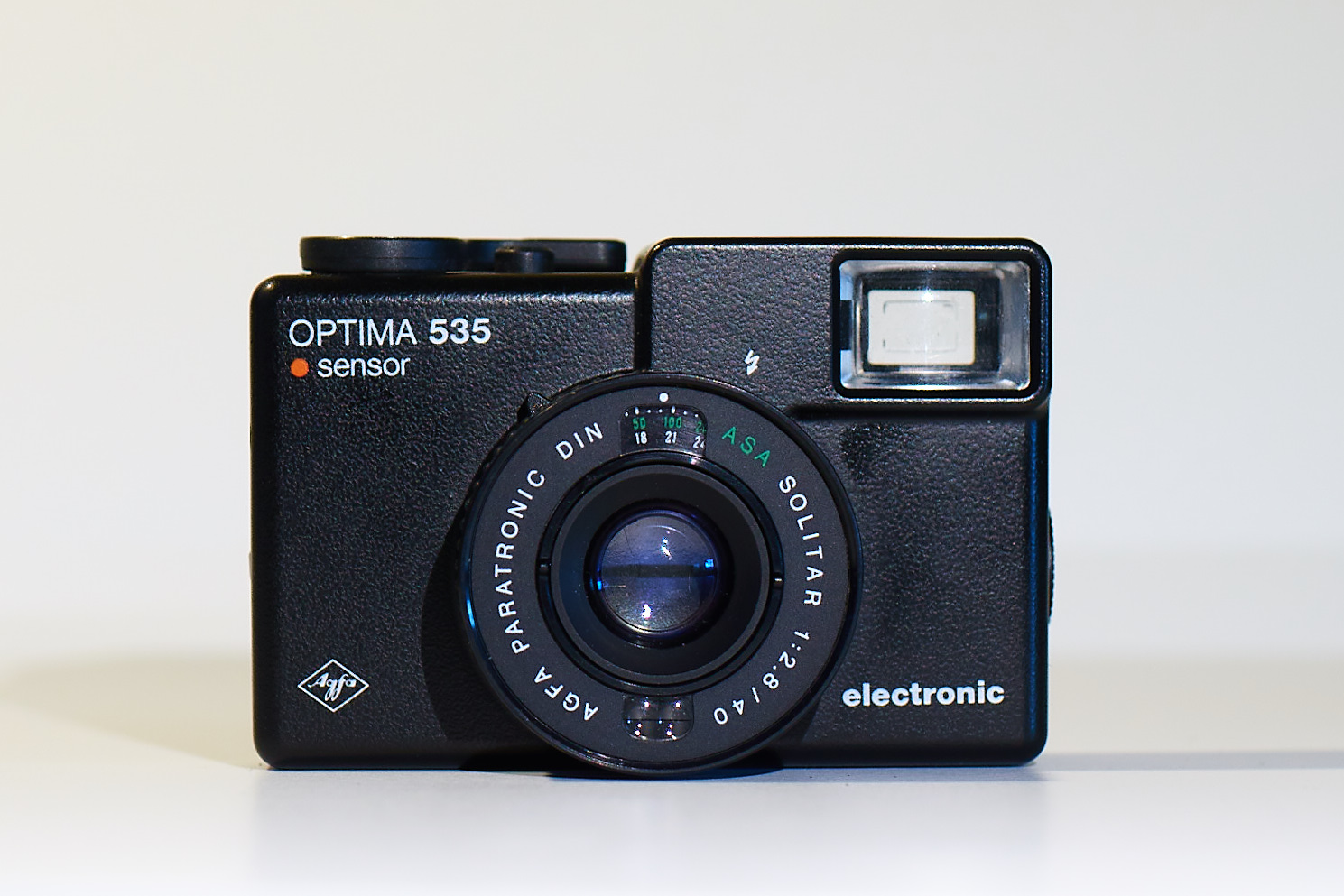
Hey James, thx for your interesting post. I just bought an Agfa Optima Sensor 535 and I’m afraid it’s broken. Put in new batteries but no light comes on in the viewfinder and the shutter just stays open for way too long (in my opinion). Is it true that the camera should work properly even with the back open and no film installed?
It should indeed operate normally with batteries installed. I just checked mine, and it fires normally with the back open and no film.
I assume you’ve moved the ISO wheel and cleaned the glass in front of the light sensor (two little bubbles at the bottom of the lens)? Both could influence how long the shutter stays open. ISO 25 vs ISO 400 is 4 full stops, and so 1/60 at 400 would be 1/4 at 25 (if my math is right) and any blockage of the light meter is going to cause issues.
Beyond that, apologies. I have no other ideas. Mine has been sitting on the shelf for more than a year. I need to shoot it or sell it.
Dear James, thank you so much for your quick reply. I will try your tips. it would be great if the problem is really only wrong settings on the camera. If you think about selling the camera, the 535 currently goes for around 100€ on ebay, at least here in germany 😉 Greetings
Hi James, I just bought this camera. To be honest, it’s my first camera ever. So, I’m a newbie with this. You say that the Shutter Speeds are 15-1/500th. But there’s no controller for the shutter speed on the camera, so how one can control it? What am I missing here? Would really appreciate your help! Thanks!
Hi Roman! Thanks for reaching out and congratulations on the new camera!
The Sensor 535 is an auto-exposure camera. There’s no way to change the shutter speed or influence the exposure…. Well, there is one or two ways. 1) you can change the iso to trick the exposure computer into overexposing (going from 200 to 50, say, will give 2 stops more exposure) or underexposing (going from 200 to 400 will force the camera to expose at one stop under). The camera will decide itself whether to widen or narrow the aperture or speed up or slow down the shutter speed. It’s likely to prefer keeping the shutter speed over 1/100 to prevent hand shake, and only go slower than that if there’s not enough light.
2) If you attach a flash, the aperture ring becomes active and I think the camera continues it’s autoexposure program (but it might lock the shutter speed to 1/100th or something: I can’t really tell in limited tests). With a roll of 100 or 200 speed film, you could put a flash on and have some control over exposure via the aperture. I don’t know how useful this would be in daylight; in dim scenes where you use the flash, the aperture limits how much flash light gets to the film.
3) you could try putting your finger over the meter (the bubble thing below the lens).
In general, the 535 Sensor exposes most scenes just right (in most situations). It struggles in the dark (as do most film cameras), but a cheap old flash will take care of that.
Load up some film and start having some fun!
what type of battery is needed?
Hey Amelie! This camera uses 3 px625 batteries. These aren’t easily available these days, and modern batteries tend to run at 1.5 bolts.
Your best bet, I think are the Wein Cell PX625 Zinc Air type batteries, though they have a short lifespan.
I use 3 LR44 batteries in adapters that I think I ordered from Japan Camera hunter. You can find these adapters various places. Batteries last for years, but this solution leads to overexposure by roughly two stops on slower films (50, 100) due to voltage differences, I think. I shoot 400 speed film with no problem.
Dear James
Thanks for the nice review.
The camera is designed to use three V625U ALKALINE batteries; NO MERCURY.
It is stated inside the camera.
The V625U are available but I use three SR44 batteries taped together and a little piece of alufoil at the plus side. No need for adapters.
Regards Spyro
Thanks for the correction and good hack tip!